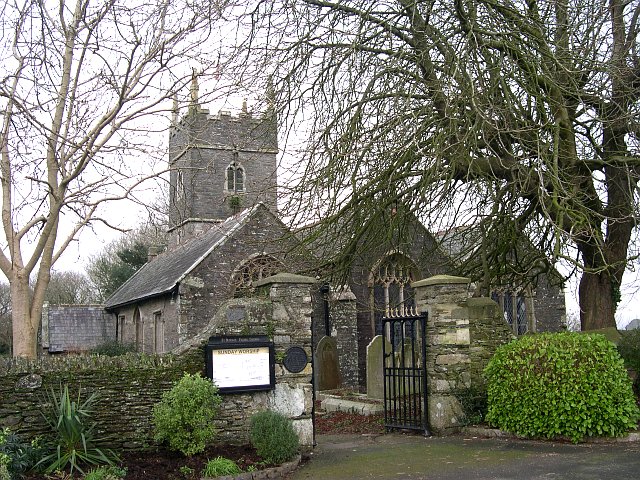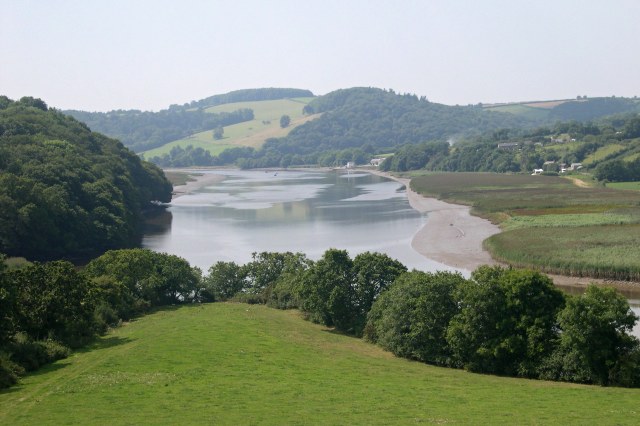|
St. Budoc
Saint Budoc of Dol (also Budeaux or Beuzec) was a Bishop of Dol, venerated after his death as a saint in both Brittany (now in France) and Devon (now in England). Saint Budoc is the patron of Plourin Ploudalmezeau in Finistère where his relics are preserved. His feast day was celebrated on 8 December, the date still used in Devon, but in Brittany this was moved to 9 December. Name The name Budoc, or Beuzec, means "saved from the waters" from the Breton ''beuziñ'' meaning "drown"; but Baring-Gould finds this "fanciful". In old Celtic, ''boudi'' means "victory" and "profit". Life Baring-Gould suggests that the princess Azenor fled Brittany with her young son due to dynastic conflict. Arriving first in Cornwall, they then proceeded to Ireland, where Budoc became a monk. They later returned to Brittany, landing at Porspoder near Brest. Hagiographer G.H. Doble is of the opinion that Budoc was a once famous abbot whose chief establishment was on the Breton coast. The vita of Breton ... [...More Info...] [...Related Items...] OR: [Wikipedia] [Google] [Baidu] |
Catholic Church
The Catholic Church, also known as the Roman Catholic Church, is the largest Christian church, with 1.3 billion baptized Catholics worldwide . It is among the world's oldest and largest international institutions, and has played a prominent role in the history and development of Western civilization.O'Collins, p. v (preface). The church consists of 24 ''sui iuris'' churches, including the Latin Church and 23 Eastern Catholic Churches, which comprise almost 3,500 dioceses and eparchies located around the world. The pope, who is the bishop of Rome, is the chief pastor of the church. The bishopric of Rome, known as the Holy See, is the central governing authority of the church. The administrative body of the Holy See, the Roman Curia, has its principal offices in Vatican City, a small enclave of the Italian city of Rome, of which the pope is head of state. The core beliefs of Catholicism are found in the Nicene Creed. The Catholic Church teaches that it is the on ... [...More Info...] [...Related Items...] OR: [Wikipedia] [Google] [Baidu] |
Château De Brest
The Château de Brest ( br, Kastell Brest) is a castle in Brest, Finistère, France. The oldest monument in the town, it is located at the mouth of the river Penfeld at the heart of the roadstead of Brest, one of the largest roadsteads in the world. From the Roman castellum to Vauban's citadel, the site has over 1700 years of history, holding right up to the present day its original role as a military fortress and a strategic location of the highest importance. It is thus the oldest castle in the world still in use, and was classified as a monument historique on 21 March 1923. The structure's heterogeneous architecture has been the result of continual adaptations to developments in siege warfare and armament on land and sea. The château stands on the opposite bank to the Tour Tanguy combining to defend the entrance to the Penfeld. An ideal geographic location The Roadstead of Brest, well-protected by a narrow "goulet" but sufficiently large to allow ships to turn or move ... [...More Info...] [...Related Items...] OR: [Wikipedia] [Google] [Baidu] |
List Of Catholic Saints
This is an incomplete list of people and angels whom the Catholic Church has canonized as saints. According to Catholic theology, all saints enjoy the beatific vision. Many of the saints listed here are to be found in the General Roman Calendar, while others may also be found in the ''Roman Martyrology'';Roman Martyrology by Month 1916 Edition Geoffrey K. Mondello, Boston Catholic Journal still others are particular to local places and their recognition does not extend to the larger worldwide church. Candidates go through the following four steps on the way to being declared saints. Saints acknowledged by the |
Armagh
Armagh ( ; ga, Ard Mhacha, , "Macha's height") is the county town of County Armagh and a city in Northern Ireland, as well as a civil parish. It is the ecclesiastical capital of Ireland – the seat of the Archbishops of Armagh, the Primates of All Ireland for both the Roman Catholic Church and the Church of Ireland. In ancient times, nearby Navan Fort (''Eamhain Mhacha'') was a pagan ceremonial site and one of the great royal capitals of Gaelic Ireland. Today, Armagh is home to two cathedrals (both named after Saint Patrick) and the Armagh Observatory, and is known for its Georgian architecture. Although classed as a medium-sized town, Armagh was given city status in 1994 and Lord Mayoralty status in 2012, both by Queen Elizabeth II. It had a population of 14,777 people in the 2011 Census. History Foundation ''Eamhain Mhacha'' (or Navan Fort), at the western edge of Armagh, was an ancient pagan ritual or ceremonial site. According to Irish mythology it ... [...More Info...] [...Related Items...] OR: [Wikipedia] [Google] [Baidu] |
Oxford
Oxford () is a city in England. It is the county town and only city of Oxfordshire. In 2020, its population was estimated at 151,584. It is north-west of London, south-east of Birmingham and north-east of Bristol. The city is home to the University of Oxford, the oldest university in the English-speaking world; it has buildings in every style of English architecture since late Anglo-Saxon. Oxford's industries include motor manufacturing, education, publishing, information technology and science. History The history of Oxford in England dates back to its original settlement in the Saxon period. Originally of strategic significance due to its controlling location on the upper reaches of the River Thames at its junction with the River Cherwell, the town grew in national importance during the early Norman period, and in the late 12th century became home to the fledgling University of Oxford. The city was besieged during The Anarchy in 1142. The university rose to dom ... [...More Info...] [...Related Items...] OR: [Wikipedia] [Google] [Baidu] |
Cornwall
Cornwall (; kw, Kernow ) is a historic county and ceremonial county in South West England. It is recognised as one of the Celtic nations, and is the homeland of the Cornish people. Cornwall is bordered to the north and west by the Atlantic Ocean, to the south by the English Channel, and to the east by the county of Devon, with the River Tamar forming the border between them. Cornwall forms the westernmost part of the South West Peninsula of the island of Great Britain. The southwesternmost point is Land's End and the southernmost Lizard Point. Cornwall has a population of and an area of . The county has been administered since 2009 by the unitary authority, Cornwall Council. The ceremonial county of Cornwall also includes the Isles of Scilly, which are administered separately. The administrative centre of Cornwall is Truro, its only city. Cornwall was formerly a Brythonic kingdom and subsequently a royal duchy. It is the cultural and ethnic origin of the Cornish dias ... [...More Info...] [...Related Items...] OR: [Wikipedia] [Google] [Baidu] |
St Budeaux
St Budeaux is an area and ward in the north west of Plymouth in the English county of Devon. Original settlement The name St Budeaux comes from Saint Budoc, the Bishop of Dol (Brittany). Around 480, Budoc is said to have founded a settlement and built a small church. The church eventually gave way to a permanent stone one, dedicated to Saint Budoc, which was erected shortly before the Norman conquest of England. The village is documented in William the Conqueror's Domesday Book of 1086. Known as Bucheside, it was valued at 30 shillings (around six times the amount of neighbouring manors). Over the course of the next few hundred years, Bucheside became Bodekishide, Budeokshed, and even Bottockishide and Butshead, the latter form being recorded on the Trevill monuments in the church. The modern name, St Budeaux, is itself a Frenchified "elegant" form. 15th to 18th centuries St Budeaux became a separate parish in 1482 by the decision of the Bishop of Exeter. During the early T ... [...More Info...] [...Related Items...] OR: [Wikipedia] [Google] [Baidu] |
River Tamar
The Tamar (; kw, Dowr Tamar) is a river in south west England, that forms most of the border between Devon (to the east) and Cornwall (to the west). A part of the Tamar Valley is a World Heritage Site due to its historic mining activities. The Tamar's source is less than from the north Cornish coast, but it flows southward and its course runs across the peninsula to the south coast. The total length of the river is . At its mouth, the Tamar flows into the Hamoaze before entering Plymouth Sound, a bay of the English Channel. Tributaries of the river include the rivers Inny, Ottery, Kensey and Lynher (or ''St Germans River'') on the Cornish side, and the Deer and Tavy on the Devon side. The name Tamar (or Tamare) was mentioned by Ptolemy in the second century in his ''Geography''. The name is said to mean "great water."Furneaux, Robert. The Tamar: A Great Little River. Ex Libris Press. 1992. Foot, Sarah. ''The River Tamar''. Bossiney Books. 1989.Neale, John. Discovering ... [...More Info...] [...Related Items...] OR: [Wikipedia] [Google] [Baidu] |
Plymouth Sound
Plymouth Sound, or locally just The Sound, is a deep inlet or sound in the English Channel near Plymouth in England. Description Its southwest and southeast corners are Penlee Point in Cornwall and Wembury Point in Devon, a distance of about 3 nautical miles (6 km). Its northern limit is Plymouth Hoe giving a north–south distance of nearly 3 nautical miles (6 km). The Sound has three water entrances. The marine entrance is from the English Channel to the south, with a deep-water channel to the west of the Plymouth Breakwater. There are two freshwater inlets: one, from the northwest, is from the River Tamar via the Hamoaze and Devonport Dockyard, the largest naval dockyard in western Europe. The other, at northeast, is from the River Plym disgorging into its narrow estuary, Cattewater harbour between Mount Batten and the Royal Citadel. In the centre of the Sound, midway between Bovisand Bay and Cawsand Bay, is Plymouth Breakwater, which creates a harbour prot ... [...More Info...] [...Related Items...] OR: [Wikipedia] [Google] [Baidu] |
Cap Sizun
The Cap Sizun (; br, Ar C'hab) is a headland forming the western extremity of the Cornouaille, in the French département of Finistère in Brittany, corresponding to the former canton of Pont-Croix. The best known sites in this region are the pointe du Raz, the pointe du Van, and, between these two points, the baie des Trépassés. The Cap Sizun reaches out into the Atlantic Ocean, bordered to the north by the baie de Douarnenez, and to the south by the baie d'Audierne. The territory of Cap Sizun is formed by the communes of Pont-Croix, Audierne, Plouhinec, Confort-Meilars, Mahalon, Esquibien, Beuzec-Cap-Sizun, Goulien, Cléden-Cap-Sizun, Primelin, Plogoff Plogoff (; br, Plougoñ) is a commune in the Finistère department of Brittany in north-western France. It contains three small ports suitable for small vessels: Pors-Loubous, Feunten-Aod and Bestrée. Local industries include tourism, traditi ... and the Île-de-Sein. This territory is covered by a commonal ... [...More Info...] [...Related Items...] OR: [Wikipedia] [Google] [Baidu] |
.jpg)




